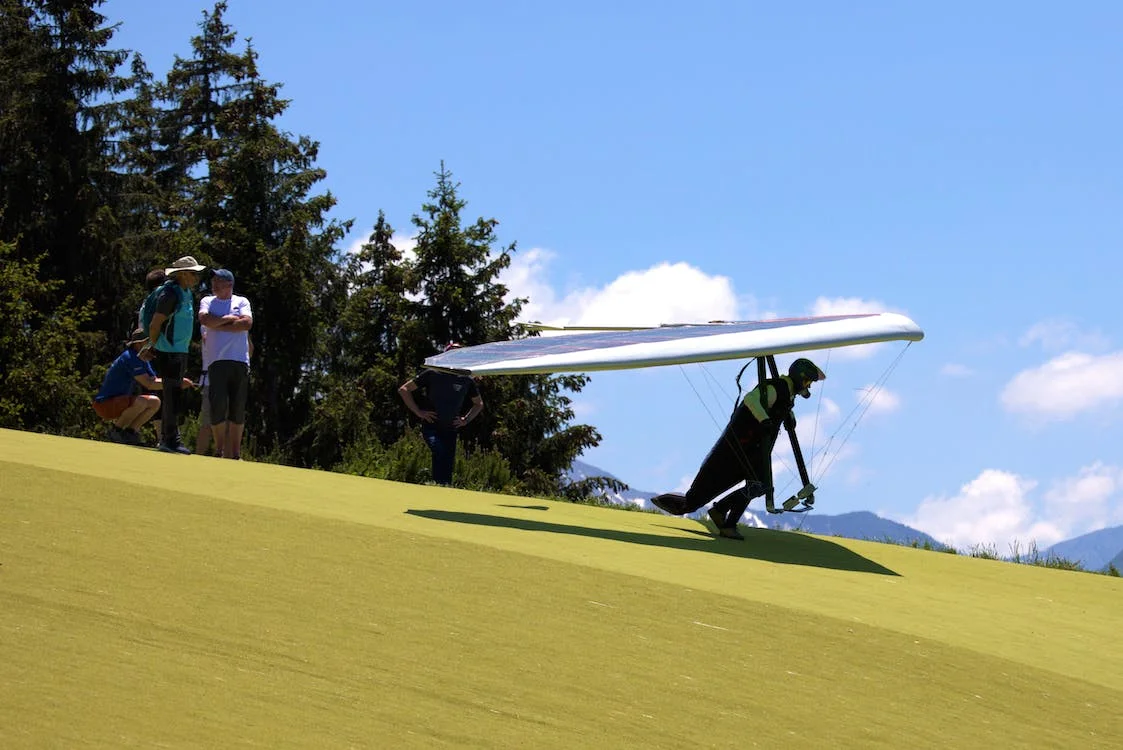Is hang gliding dangerous? | Blazingfact
Have you ever imagined soaring high above the ground, with only a hang glider as your means of staying airborne? It's undeniably thrilling and liberating, but is hang gliding a safe activity? If you're considering venturing into hang gliding but have concerns about its level of risk, you've come to the right place. In this article, we will delve into the world of hang gliding, explaining its potential dangers in a friendly, understandable manner while offering additional insights and expanding on the topic.
Hang gliding, despite its potential for being one of the most serene experiences on Earth, does carry inherent risks. Various factors can contribute to accidents and mishaps while engaging in this sport. These include unfavorable weather conditions, mistakes made by the pilot due to poor judgment or errors, the presence of other gliders or aircraft in the sky, equipment failures, and more, all of which can result in injuries or even fatalities.
 |
| Is hang gliding dangerous? |
Hang gliding is an incredibly popular sport known for its unparalleled adrenaline rush. However, it is essential to approach it with caution and adhere to proper procedures to ensure safety. In this article, we will explore the dangers associated with hang gliding and shed light on why it is considered a risky activity. Moreover, we will discuss the safety measures incorporated into hang gliders to mitigate the risks of injury or death.
So, is hang gliding dangerous? To be honest, I won't sugarcoat the reality to convince you to join this amazing sport. Hang gliding can indeed be dangerous. When you find yourself thousands of feet above the ground, relying solely on a hang glider and your equipment, it's undeniable that risks are present.
What Are the Most Critical Aspects of Hang Gliding?
Now, let's dive deeper into each of the previously mentioned dangers, understanding how they can pose risks while engaging in hang gliding and exploring ways to minimize those risks.
Unfavorable Weather
One of the most crucial factors that make hang gliding dangerous is poor weather conditions. It's vital for pilots to stay informed about local weather forecasts, particularly when flying in unfamiliar areas or at higher altitudes, such as mountains. As you ascend to greater heights, the oxygen levels decrease, and strong gusts of wind can create turbulence that affects the stability of your glider. This turbulence may lead to loss of control or even the collapse of the glider.
It's essential to watch out for lightning strikes, especially when flying through thunderstorms or near bodies of water. Water vapors and salt act as conductors, increasing the likelihood of lightning strikes.
Poor weather conditions also encompass sudden shifts in wind intensity, rapid formation of rain clouds resulting in heavy downpours, and thermal plumes that influence the handling of your glider, among other factors.
Pilot Errors & Decision-Making
Pilot errors and poor judgment are significant contributors to accidents in hang gliding. These mistakes can lead to injuries or even fatalities if not addressed. Common errors include neglecting to check for twisted or snagged lines before takeoff, flying too close to the ground (especially near trees), and executing sharp turns at high speeds, which can result in loss of control.
In the event that you do lose control of your glider, it's crucial not to panic. Instead, remain focused and composed while you assess the situation and determine the appropriate course of action. Remember, in the vast majority of incidents, you should be able to regain control and ensure your safety by relying on your training and avoiding panic.
Other Gliders & Aircraft
Pilots must always be vigilant and aware of the presence of other gliders and aircraft in the sky. The most common encounters with other aircraft occur near airports, where planes take off and land. However, it's important to note that these areas are strictly regulated by the Federal Aviation Administration (FAA), and hang gliding is typically not permitted in these airspace zones.
Apart from airports, the primary concern for hang glider pilots is the presence of other hang gliders in popular flying areas. It's not uncommon to witness multiple pilots soaring through the air simultaneously in these regions. Each pilot bears the responsibility of prioritizing their safety as well as the safety of others. This involves maintaining a safe distance and avoiding collisions by remaining attentive and focused on their own flight path and the proximity of other pilots, gliders, and aircraft.
Equipment Malfunction
Another critical risk factor during hang gliding is equipment failure. This includes issues like line twists or broken components on your glider. To minimize the risk of equipment failure, it is crucial to conduct thorough inspections of your gear before takeoff, ensuring everything is in good working condition.
Furthermore, it is essential to have contingency plans in place in case of equipment malfunction. For instance, always carry a knife that can be used to free yourself from tangled lines, and ensure you have sufficient altitude to safely deploy your reserve parachute if needed. It goes without saying, but never cut yourself free if you do not have a functioning parachute.
How Many Fatalities Occur in Hang Gliding Each Year?
When it comes to hang gliding in the United States, if you're participating in this activity, you're likely a member of the United States Hang Gliding and Paragliding Association (USHPA). This organization is responsible for granting the necessary ratings to fly, and they also publish annual reports on related fatalities.
According to USHPA's annual fatality reports, there is an average of approximately 3.5 hang gliding deaths per year. Considering the fluctuating membership numbers ranging from 3,000 to 4,000 members, this means that roughly 1 in every 1,000 members unfortunately loses their lives while engaged in hang gliding annually.
It's important to note that we don't have precise data on the number of flights each member takes on average, so we cannot provide an exact statistic regarding the number of deaths per flight. However, in terms of USHPA members, approximately 0.1% of them experience fatal accidents each year.
What Safety Features Do Hang Gliders Have?
Thankfully, hang gliders are equipped with safety features designed to provide protection in the event of an accident. Let's discuss two key safety features: body harnesses and hang gliding parachutes.
Hang Gliding Harness
When we talk about harnesses, we're referring to the complete setup that the pilot is strapped into. This includes the body harness itself as well as the hang loop. Both of these safety features are crucial when engaging in hang gliding, and every glider utilizes them during flight.
The purpose of these features is to secure you to the hang glider, maintain your body in the correct position for optimal control, and prevent you from falling to the ground. Additionally, they can help prevent entanglement with the glider in case of a mid-flight collapse.
Hang Glider Parachute
Another important safety feature found on hang gliders is the parachute. Unlike the body harness and hang loop, hang gliders typically do not include a built-in parachute. However, most pilots wear a parachute within the harness while gliding. This parachute can be essential for safety, particularly when performing acrobatic maneuvers.
We're all familiar with parachutes, right? In the context of hang gliding, this device is specifically designed for emergency situations when there are no other options but to bail out. When faced with such a circumstance, simply deploying the parachute allows you to be caught by it and descend slowly to the ground. It's a vital lifeline that can make a significant difference, especially in extreme circumstances where it could be a matter of life or death.
Final Thoughts
So, is hang gliding a dangerous activity? The answer is both yes and no. Undoubtedly, there are inherent risks associated with hang gliding. However, by being aware of these risks and taking appropriate precautions, the overall level of danger can be significantly reduced.
In conclusion, while hang gliding carries its share of risks, it can also offer a highly rewarding experience when practiced safely. Therefore, it's essential to fully understand the nature of this activity before taking flight and ensure that you are adequately prepared for the potential challenges that lie ahead.





